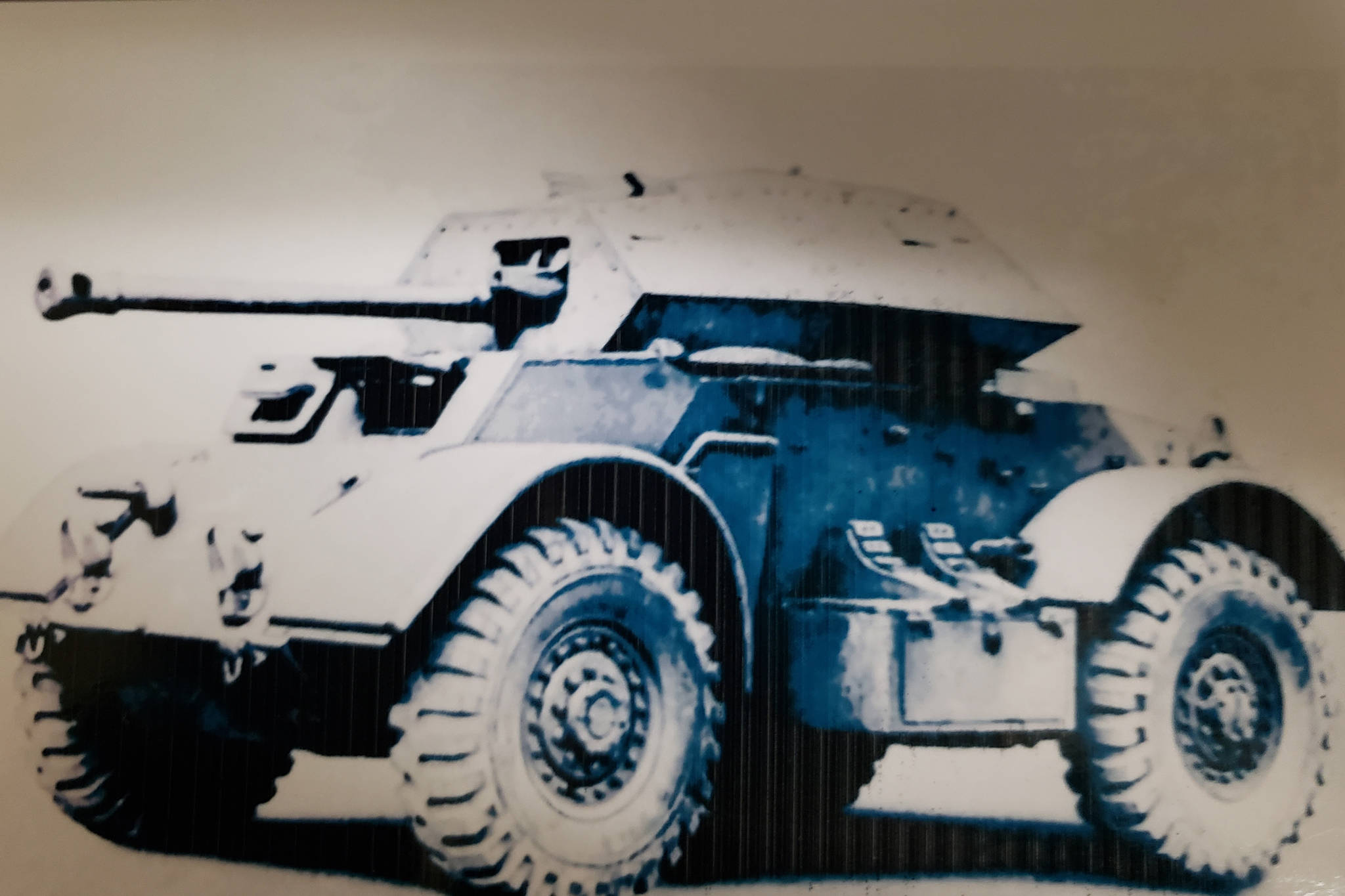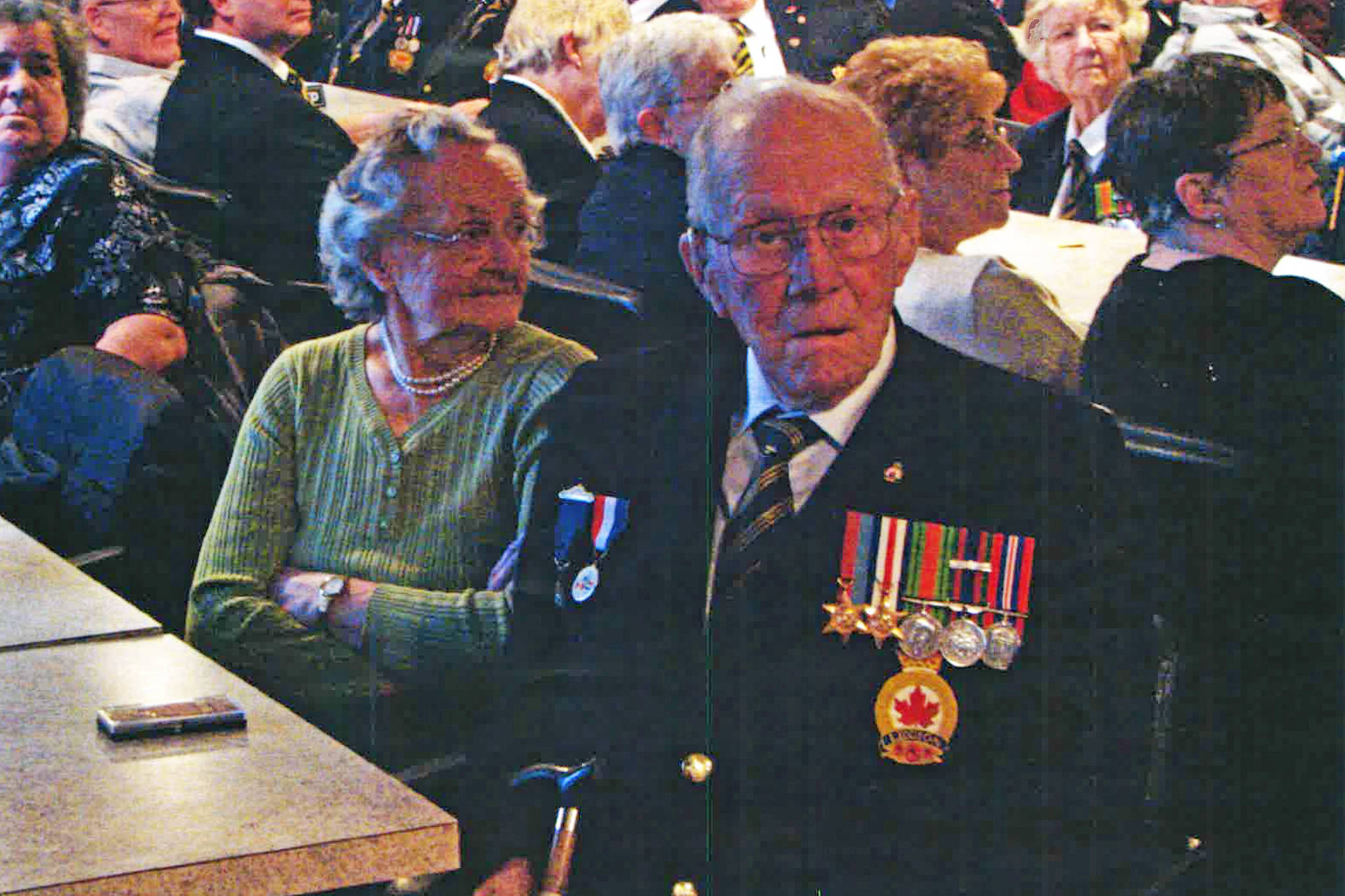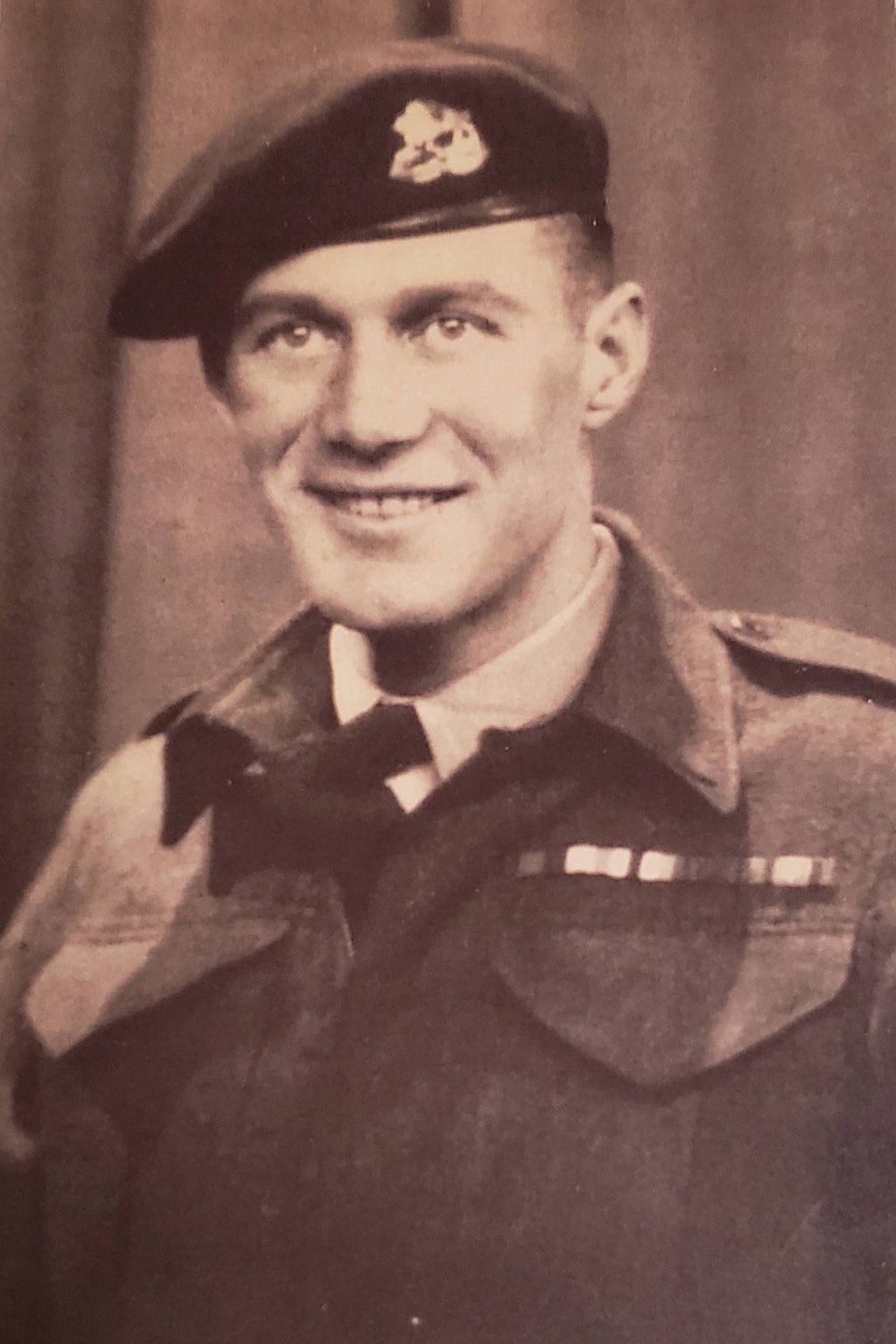Sometimes when a story is told, it can get lost along the way. With George Hoffman’s last write up, Carrie O’Neill from Heaton Place Retirement Residence felt that it could have been better told and so she re-writes:
Years ago, George Hoffman decided to write about his life in the military.
His writings were later published, titled Shadows and Substance.
Hoffman was born on July 14, 1922, and spent his early years in Manitoba.
He would join the non-permanent Active Militia just after New Year’s Day, 1942.
After becoming impatient for the unit to go active, he would enlist full-time with the 18th Recce Battalion, (XII Manitoba Dragoons).
Hoffman says in his book: “We were now members of the Canadian Army Active Force…There was no changing our mind and backing out now. We were in for the duration of the war.”
He would go on to fight and defend our country, enduring many volatile battles, fierce weather and hardships.
There are many stories to tell of Hoffman’s experience at war, but one that stands out for him he retells as follows:
“The troops were setting to sail overseas, enroute to Greenock, Scotland, in August 1942. George was a trooper with the 18th Armoured Car Regiment (XII Manitoba Dragoons). Our regiment was a part of the 4th Canadian Armoured Division.”
“After the luggage was on board the Troopship Letitia, we were shown to our quarters on ‘D’ deck, which was below the waterline. We were told that the ship was transporting cattle before the war and in my opinion, the ship wasn’t even fit to do that.
“It was August 1942, and the heat of the sun created unbearable hot temperatures below deck, making it hard to breathe.
“Eventually we settled into the sea voyage with a mixture of excitement, curiosity and apprehension.’
The following details were taken from an excerpt from Maj. Stanley Street’s diary:
“We sailed from Halifax, mostly U.S. Navy units, as well as a few British Naval vessels guarded the convoy…we were ordered below decks for security reasons and except for a few crewmen, I was alone on deck.
“It was a bright, moonlight night, and nearby ships could be seen clearly. A cruiser came running alongside of us. It was very quiet.
Suddenly the cruiser’s siren roared…Almost immediately, a ship in our line, not far astern blew up. She became a pillar of flame that reached to the sky, and then just winked out.
“Right after that, a naval ship came tearing across our stern, and was hit by another ship…she seemed to explode. There were other ships that caught fire.
“It was an unnerving sight. I was ordered to the bridge and instructed to go below deck and tell the troops that it was just some Navy types practicing with some depth charges.
“Torpedoes and submarines were not to be a subject of conversation.”
Hoffman further recalled that incident: “Meanwhile, below deck, all we could hear were a lot of loud explosions. We watched as the plates on the inside of the hull bounced around, and the paint and the rust came off in large flakes with each explosion.
“By the next morning, we all knew that an enemy submarine had been in our midst the night before.”
Years later, those aboard the Letitia would learn the truth.
The explosions they we were hearing were not from and enemy submarine attacking, as they believed at the time, but from depth charges which were on board a couple of our ships which were in our convoy.
One was an American destroyer, which sank with all hands on board; the other was an oil tanker.
There were several ships damaged in the ensuing collisions as well as those that were damaged and sank. Some ships would have been carrying depth charges which were set to detonate at certain depth.
They arrived in the UK from Halifax on the Sept. 1, 1942, and would not be committed to battle until July 10, 1944. During this period, they were stationed in England, training for the day they would be amongst the troops invading the continent. As we all know now, the initial landing took place on the June 6, 1944, known in history as D-Day.
READ MORE: 98-year-old North Okanagan woman designs clothes for Barbie
READ MORE: Armstrong couple has deep roots in town
During the 22 months they spent in England, Hoffman said: “We had to learn our skills requiring us to operate radios, learn Morse code, fire large guns which were mounted in the turrets of our armoured cars and tanks.
‘We had to learn how to drive and maintain these vehicles and we had to be proficient in map reading as well.”
(The British had removed all of the street and road signs in the event Germans invaded the country).
This was but the beginning of a long and exhausting journey of war for Hoffman.
He would serve as trooper acting as crew commander operating armoured cars, and later promoted to lance corporal.
Shortly after, he would then be “joed” for guard commander and acting orderly sergeant.
The worst of the war was to follow as he witnessed things he doesn’t ever wish on anybody.
“When I think back, most of the time my good fortune was more than I should have expected. The good Lord cares for angels and damn fools,” Hoffman said.
He was discharged on the March 3, 1946. For a while after the war, he said “it felt unreal. There is a comradeship that comes with serving with my ‘brothers.’”
But eventually, Hoffman met the love of his life, his wife Esther, who then became his lifelong partner. The couple recently celebrated their 73rd wedding anniversary.
Heaton Place Retirement Residence is now where they lay their head at night.
Having led such full lives, it is now time for the two of them to relax and enjoy being pampered.
I have spent a lot of time with this lovely couple, and I am deeply touched by their willingness to share their journey. Even as I write this story, my gratitude is overflowing and my heart is full. Thank you for sharing this powerful story of a Canadian hero and his wife – Thank you George and Esther – and thank you to our Canadian soldiers past and present.
Carrie O’Neill is the resident relations coordinator at Heaton Place in Armstrong.


